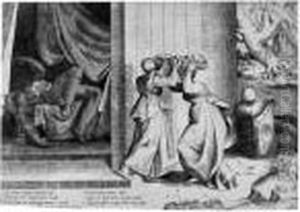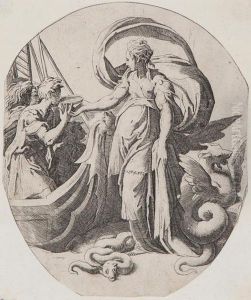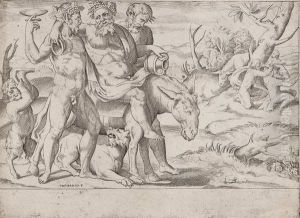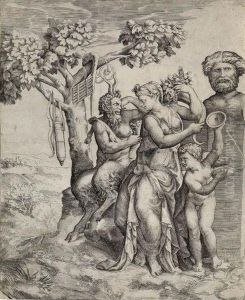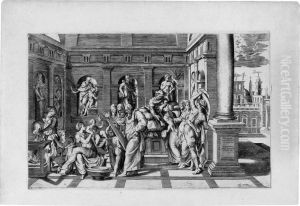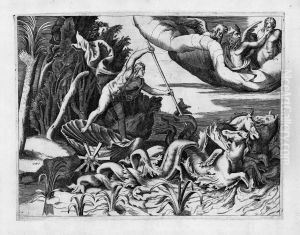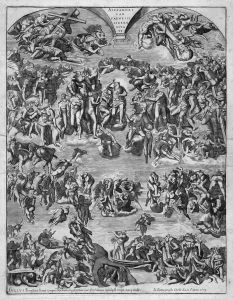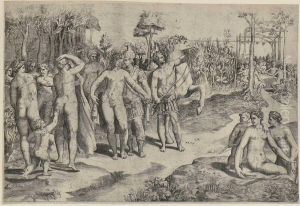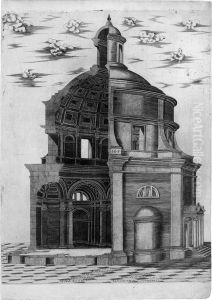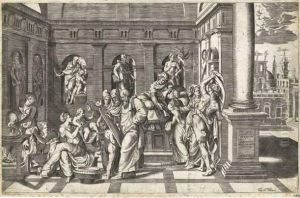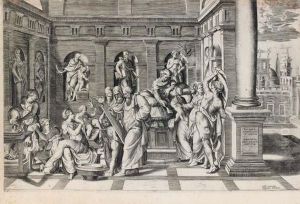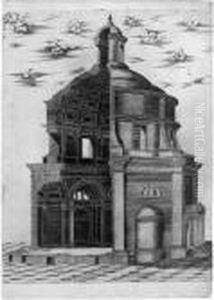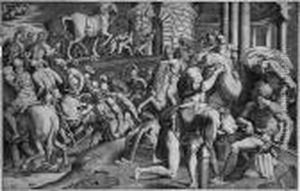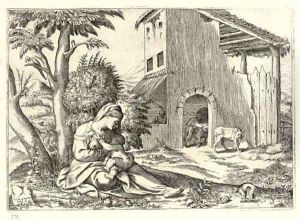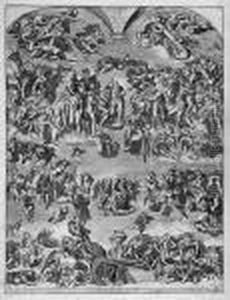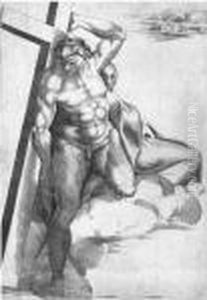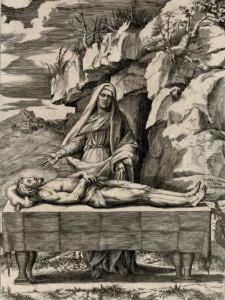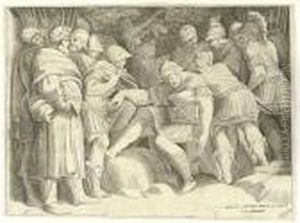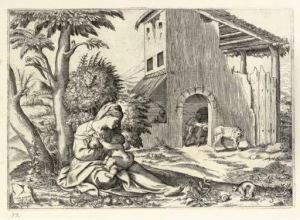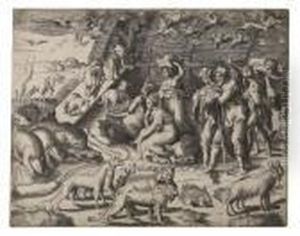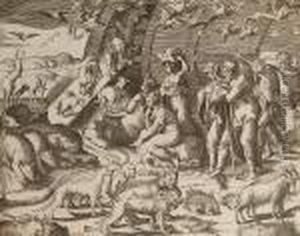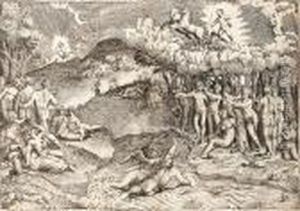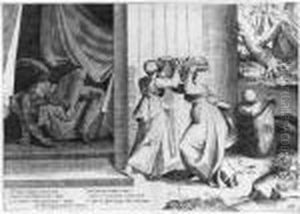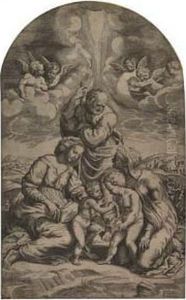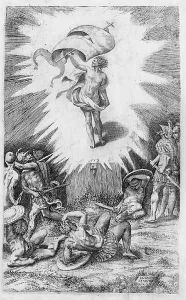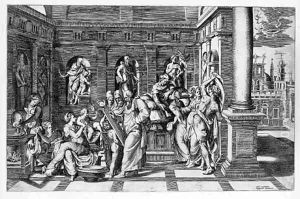Giulio Bonasone Paintings
Giulio Bonasone was an Italian artist known for his engravings and etchings during the Renaissance period. Though his exact birth date is not known, it is believed that he was born around 1498 in Bologna. His works reflect the influence of the Bolognese school, characterized by the attention to detail and the emphasis on decorative elements. Bonasone was one of the most prolific engravers of his time, and he worked with a variety of subjects, including classical mythology, religious scenes, and portraits.
Bonasone initially apprenticed with a goldsmith, which gave him a strong foundation in design and metalwork. This experience was crucial for his later career as an engraver. By the 1530s, he had begun to produce prints, both after his own designs and after the works of other prominent artists of the time, such as Raphael and Parmigianino. His reproductions of famous paintings allowed for wider dissemination of the designs of the Renaissance masters, thus contributing to the spread of the Renaissance style.
Throughout his career, Bonasone developed a reputation for the high quality of his engravings. He had a particular talent for incorporating intricate details into his prints, which often required innovative techniques and a delicate touch. His prints are notable for their precise execution and the clarity of their lines, which demonstrated his mastery of the medium.
Bonasone's work was not limited to engravings; he also produced a number of etchings, a technique that was still relatively new at the time. His etchings are characterized by a freer line and greater spontaneity than his engravings, showing his versatility as an artist.
Giulio Bonasone's contributions to art are not limited to his prints. He is also known to have participated in the production of illustrated books, thus influencing the fields of publishing and book design. Unfortunately, not much is known about his personal life, and the details surrounding his death are vague. It is generally accepted that he was active until at least 1574, but the date of his death remains uncertain. Today, Bonasone's works are held in high esteem and can be found in various museums and collections around the world, where they continue to be studied and appreciated for their artistic merit and historical significance.
